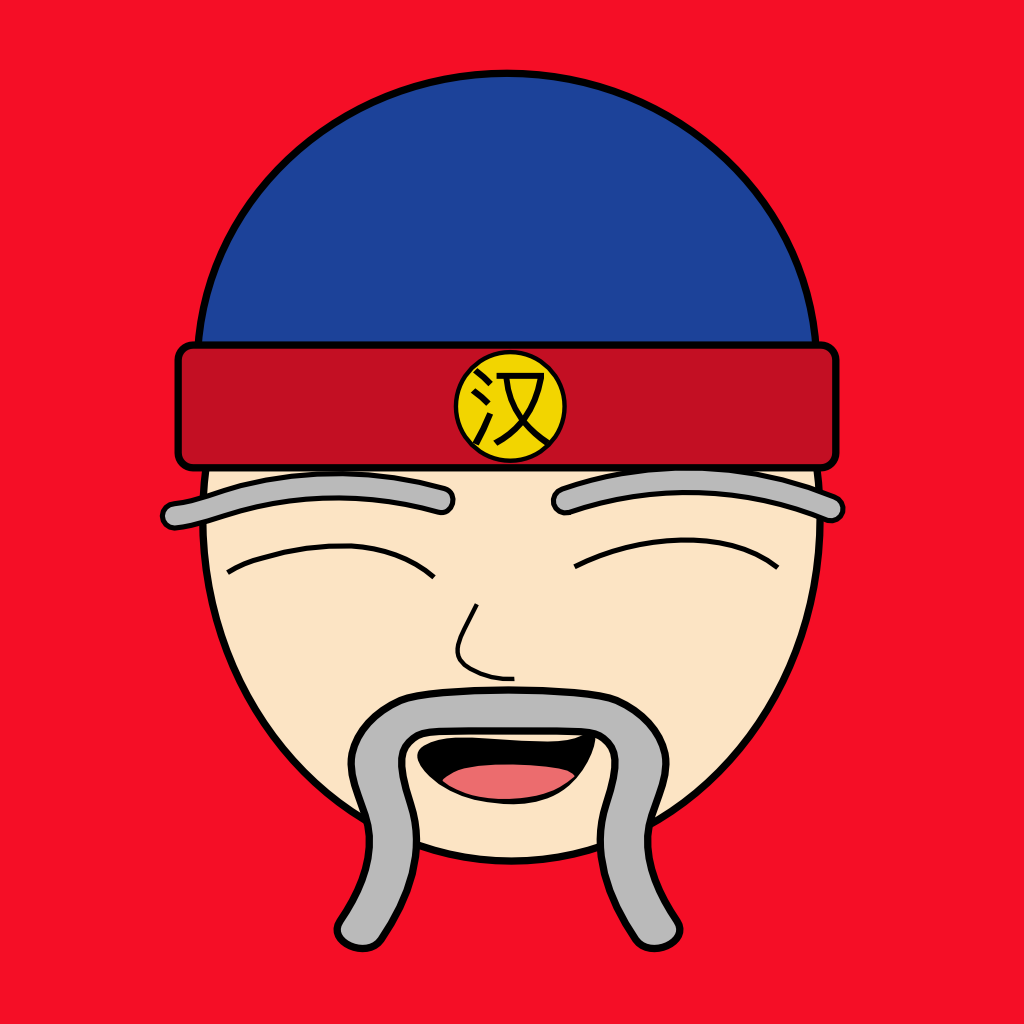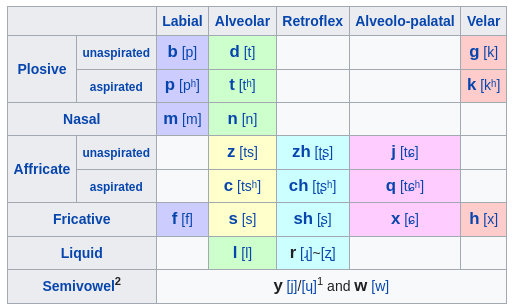This article explains the basics of Pinyin and some of it’s history.
What is Pinyin?
You’ve probably seen Chinese characters before. Maybe you know some guy with the Chinese word for table tattooed on his forehead, or you’ve seen them in menus or signs at Chinese restaurants.
The most basic character is the character for one:
一
It’s kind of obvious what it means, in a way, a single line, one. What a great way to represent meaning. The only problem is how do we pronounce it?
Chinese dictionaries used to list two characters next to the word to tell you how to pronounce it, problem was you needed to know both characters to work out how to pronounce the other one. It was an effective system for the educated, but it wasn’t helpful for absolute beginners.
At the start of the 20th century there was an academic movement to produce a better way to represent character pronunciation which culminated with the invention of Pinyin.
Pinyin was not the first romanization of Chinese. In fact, the first transcription of Chinese characters into the Latin alphabet took place in 1598! Before Pinyin the most popular system was the Wade-Giles (two diplomats) system. However, it was a bit clunky and wasn’t used by native Chinese speakers much. Here’s an example:
Ni3 shih4 Pei3ching1jên2 hai2shih4 Shang4hai3jên2?
The pinyin looks much more readable:
Nǐ shì Běijīng rén háishì Shànghǎi rén?
Pinyin was developed by a committee to reform the Chinese language in 1949 and first saw use in 1958. One of the reasons it was created using the Latin alphabet was to make it easier for non-native speakers to learn Chinese. Think about that, someone actually put some thought into making your life easier!
What are tones?
So before we get started on the details of Pinyin. Let’s just get a quick reminder on tones in Chinese.
Chinese has 4 tones, and one neutral tone (often referred to as the 5th tone, but it’s really the absence of any tone).
In pinyin a tone symbol (officially a tone diacritic) is placed over a vowel to indicate the tone. Sometimes a number is used instead.
| Name | Description | Pinyin | Audio |
| The first tone | Long and flat | mā | |
| The second tone | Rising | má | |
| The third tone | A fall followed by a rise | mǎ | |
| The fourth tone | Falling | mà | |
| The neutral tone (fifth tone) | A word with no tonal emphasis (just say it like normal) | ma |
Where do the tone marks go?
When using numbers the number is always placed after the syllable, like so :
| 一 | yi1 | one |
When using the symbols the rules are a bit more complex. Getting the position right doesn’t really matter all that much in real life; but it’s important if you’re using pinyin in an academic setting or taking exams!
Here are the rules:
- When there’s only one vowel in the syllable it goes over the vowel
- If there’s an a or an e it always goes over the a or the e
- In ou, o gets the mark
- Otherwise the final vowel takes the mark
You can use the table below to help you work out where to put the mark when there’s more than one vowel.
| a | e | i | o | u | ü | |
| a | ái | áo | ||||
| e | éi | |||||
| i | iá, iáo | ié | ió | iú | ||
| o | óu | |||||
| u | uá, uái | ué | uí | uó | ||
| ü | üé |
If you want to learn more about tones keep an eye out for our next article on tones.
How is pinyin built?
The pronunciation of a Chinese character written in Pinyin is made up of up to three components, an initial (sometimes), a final (required), and a tone (sometimes).
Here’s some examples:
| Character | Pinyin | Meaning | Pinyin Components | Audio |
| 啊 | a | said at the end of a sentence to indicate approval | the ‘final’ a | |
| 爱 | ài | love | the ‘final’ ai + the fourth tone marker | |
| 一 | yī | one | the ‘initial’ y + the ‘final’ i + a first tone marker |
If you’re an English speaker you might wonder why initials and finals are important. When you learnt to read and write you just learnt letter sounds and then put them together.
Well it’s important to realize that pinyin isn’t really an alphabet, it’s more components that when put together make a particular sound.
Pinyin will seem a bit inconsistent if you think about it with an English speaking mindset; but it’s completely consistent if you think about it correctly.
For example the final i is pronounced like the ee in see.
So 一 (yī) is pronounced eeeeee
So you would expect shi to be pronounced like she. But it’s not. Here the i is pronounced like the uh in huh.
So shi is pronounced like shuh.
Seems inconsistent but it’s not because in each case the i final is part of a different grouping. There’s a great table on Wikipedia that shows theses groupings in detail:
https://en.wikipedia.org/wiki/Pinyin_table
Don’t worry too much about memorizing it straight away. Just keep the knowledge in the back of your head. It will make more sense as you learn.
Here’s a list of all the initials:
Remember that all of these always need to be paired with an initial (table below).
| Initial | Example Character | Example Pinyin | English | Audio |
| b | 不 | bù | no | |
| p | 铺 | pù | store | |
| m | 目 | mù | eye | |
| f | 父 | fù | father | |
| d | 肚 | dù | tummy | |
| t | 兔 | tù | rabbit | |
| n | 怒 | nù | fury | |
| l | 路 | lù | road | |
| g | 故 | gù | intentional | |
| k | 库 | kù | warehouse | |
| h | 户 | hù | a household | |
| j | 句 | jù | sentence | |
| q | 去 | qù | to go | |
| x | 需 | xū | to want/need | |
| zh | 住 | zhù | to live at/stay | |
| ch | 处 | chù | a place | |
| sh | 术 | shù | technique | |
| r | 入 | rù | to enter | |
| z | 租 | zū | to rent | |
| c | 促 | cù | to urge | |
| s | 速 | su4 | speed |
Here’s a list of all the finals
Note that even though an example is given for each final, when paired with certain initials the final may be pronounced differently. Refer above to yī and shí
| Final | Example Character | Example Pinyin | English | Audio |
| a | 妈 | mā | mother | |
| o | 破 | pò | broken | |
| e | 可 | kě | to allow | |
| ai | 爱 | ài | to love | |
| ei | 累 | leì | tired | |
| ao | 老 | lǎo | old | |
| ou | 口 | kǒu | mouth, opening | |
| an | 看 | kàn | to see | |
| ang | 汤 | tāng | soup | |
| en | 很 | hěn | very | |
| eng | 能 | néng | to be able to | |
| ong | 东 | dōng | east | |
| er | 二 | èr | two | |
| u | 不 | bù | no | |
| ua | 花 | huā | flower | |
| uo | 果 | guǒ | fruit | |
| uai | 快 | kuài | quick | |
| uan | 穿 | chuān | to wear | |
| uang | 床 | chuáng | bed | |
| un | 裙 | qún | skirt | |
| i | 一 | yī | one | |
| ia | 下 | xià | down | |
| ie | 写 | xiě | to write | |
| iao | 小 | xiǎo | small | |
| iu | 九 | jiǔ | nine | |
| ian | 点 | diǎn | dot/to order | |
| iang | 两 | liǎng | two/both | |
| in | 心 | xīn | heart | |
| ing | 请 | qǐng | please | |
| iong | 穷 | qióng | poor | |
| ü | 女 | nǔ | woman | |
| üe | 月 | yuè | month | |
| üan | 元 | yuán | Chinese yuan | |
| ün | 春 | chūn | spring |
Our website mistermandarin.com helps you learn Pinyin while building your vocabulary and improving your writing skills.
Join Mister Mandarin and start learning Chinese today!
Let us know below if you have any questions or corrections!

